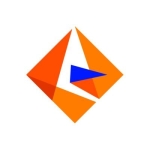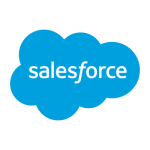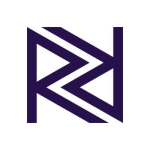What is our primary use case?
We're populating a data warehouse, which is the primary focus, but we are also using it to populate our data lake with unstructured data.
What is most valuable?
It's very intuitive and it's super fast once the data's in the cloud. It's simple and visual, as well. I was self-taught. It's so intuitive and easy to use you can actually just teach yourself how to use it. They also have very good support with their YouTube tutorials. Those show you how to do various things if you need help figuring out aspects of the solution.
What needs improvement?
Ideally, I would like it to integrate with Secrets Manager as well as the AWS.
For how long have I used the solution?
I've been using the solution for six months.
What do I think about the stability of the solution?
I haven't had any issues with stability.
What do I think about the scalability of the solution?
It's highly scalable. It takes upon itself the Redshift scalability, so it's very good.
We'll be accommodating more data sources going forward. Up until now, it's been a pilot, but we've basically got about another 22 data sources to bring on board. This has been a very successful proof of concept and we will definitely continue using the Matillion going forward.
How are customer service and technical support?
Technical support has been very helpful. They've got quite an efficient help desk and they've always come back to me with good technical answers within 24 hours, which is very acceptable.
Which solution did I use previously and why did I switch?
We had previously used a homegrown ETL system and used a combination of IBM Cognos and ClickView as the presentation layout. They both had their own ETL steps inside them. What we're doing now is we're taking all of the data and moving it into one central data lake warehouse, which is sitting in Redshift, and controlling all the ETL in one place, as well. We're looking to switch off the legacy products now.
Essentially, I want all my data sitting in AWS and I wanted one product that could handle everything, that also needed to be lightweight. I didn't want to go with one of these big Informatica's or other similar tools that are out there, which are all licensed based and very expensive. I wanted something lightweight that was easy to use and relatively cheap.
How was the initial setup?
The initial setup is very straightforward. You can set your first job up in literally minutes. We had our first jobs up almost instantly.
For deployment, the latest version that's just come out integrates with Git, so you can do all of your conversions just using the native Redshift code commit, which is the Git repository. You can actually just do it and it's turnkey. It's very easy. You don't need any people, actually. For maintenance, ideally, we would need about a couple of people.
We have a small team doing all of the data requirements.
What about the implementation team?
We handled the implementation themselves. That's the beauty of the product. We didn't need to get any external help.
What was our ROI?
It probably is a bit early to measure ROI because at the moment we are having to run all of our processes in parallel and a lot of our existing infrastructure has hidden costs. It definitely will be a lot cheaper going forward and we'll be able to show that. Once we're able to switch off all our legacy servers we'll see very clearly that there's an ROI.
With on-prem servers, there are always hidden costs, but moving to the cloud makes billing and any extra costs very transparent.
What's my experience with pricing, setup cost, and licensing?
The solution is very cheap. You're paying $2.50 an hour and if you set your service up, which you can do, you're not getting charged. Currently, our ETL process is just an overnight process that runs for about an hour. I can start and stop my server just for an hour if I want to and spent $2.50 a day for an ETL solution. There are no additional costs. It plugs into the AWS marketplace. It's very easy to manage that cost. And if you don't want to use it for a while, you just switch off the EC2 instance and you're not getting billed.
Which other solutions did I evaluate?
We did have a look briefly at Informatica, but it was just too industrial and over the top in terms of price.
Also, Matillion was the only tool that was fully integrated into Redshift. The other tools were basically bolt-ons onto the cloud, but they weren't using the full extent of the card processing capabilities. For this tool, Matillion is actually using the full processing capabilities of Redshift, which includes what they call Massively Parallel Processing on all of their nodes. It's actually a cloud-native product. It was built specifically for Redshift and that was the main difference. There are other tools we could have used, but they required separate EC2 instances to be commissioned and they just didn't seem to integrate as well into the cloud space.
What other advice do I have?
We're using the latest enterprise version of the solution with the public cloud deployment model.
They're constantly improving themselves. I'm quite pleased with the pace of the number of changes that are coming out all the time.
It's a great product and I think it's very competitive. I would recommend the solution.
I would rate the solution nine out of ten.
Disclosure: My company does not have a business relationship with this vendor other than being a customer.
















Hi Sumathi, I work for Matillion and would love to help you out! You can find Matillion ETL for Amazon Redshift features here: www.matillion.com